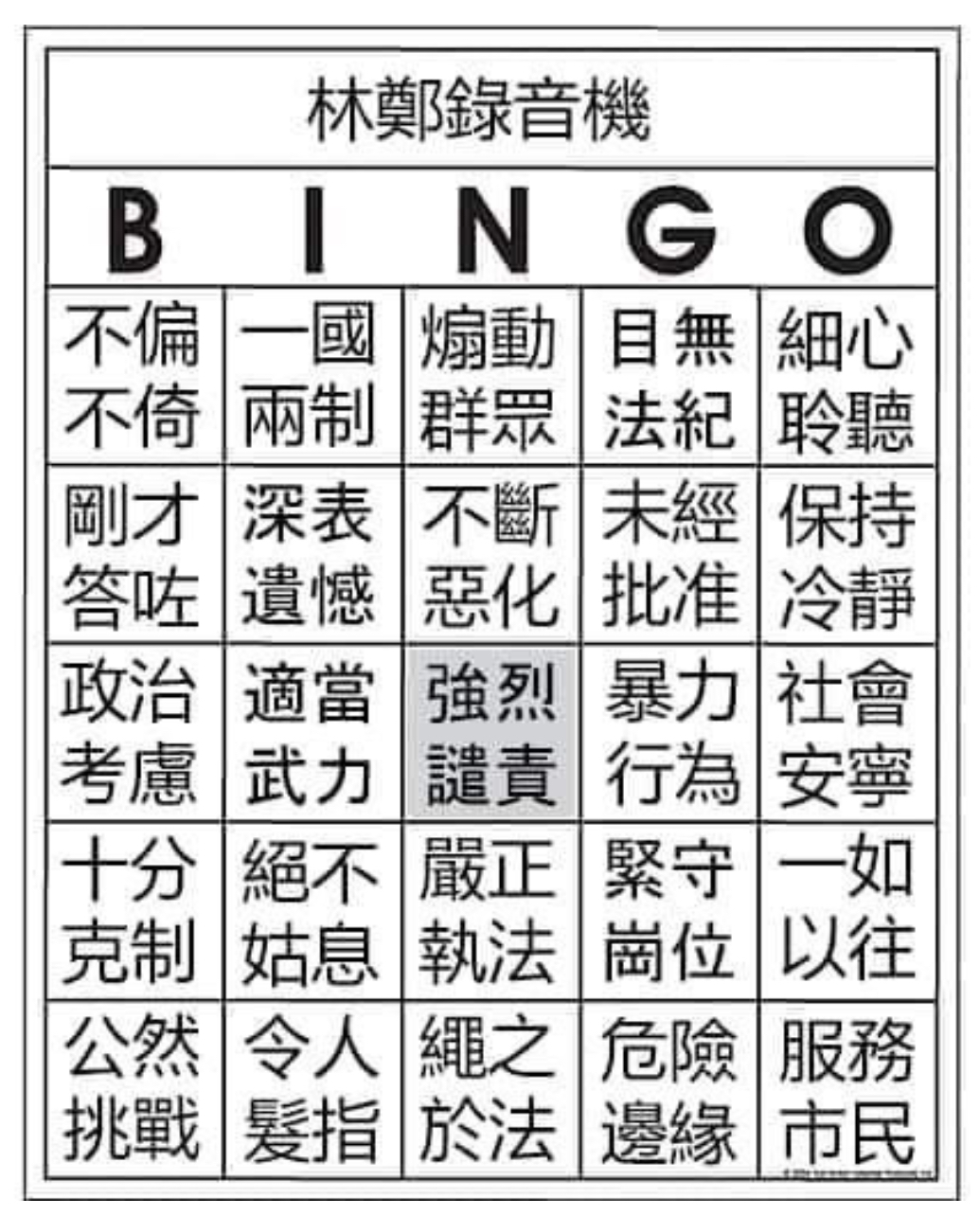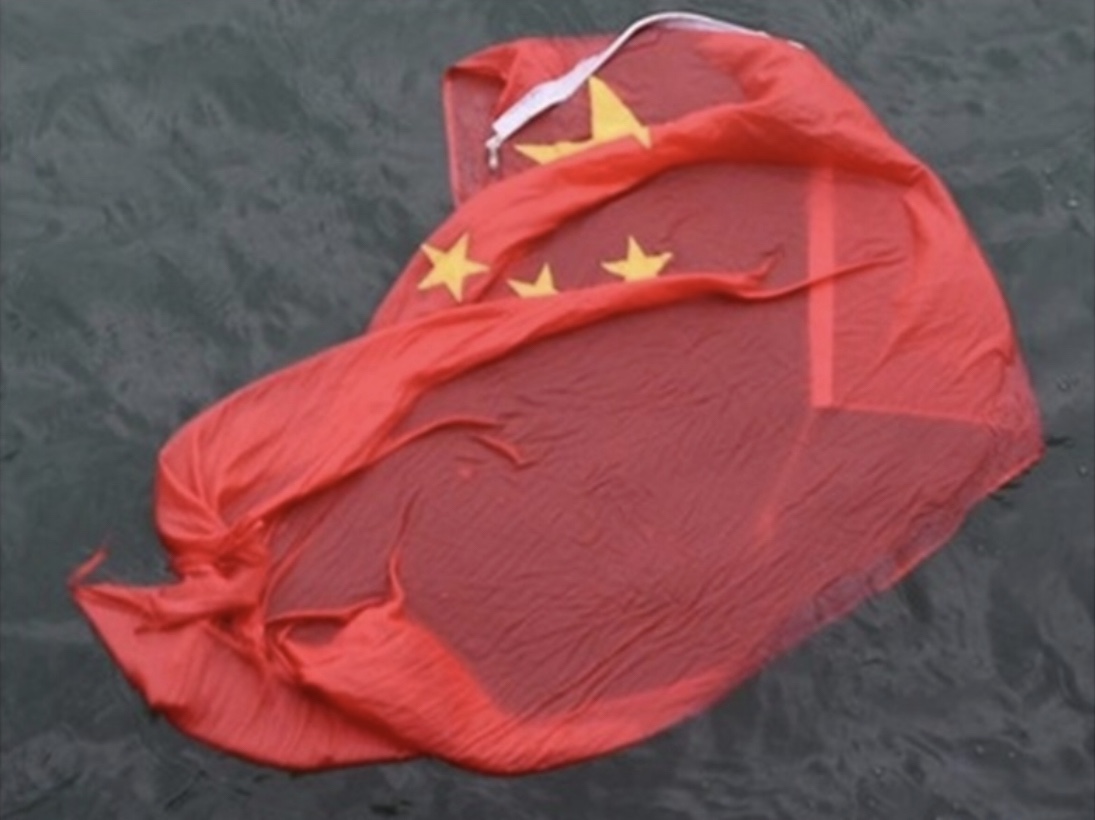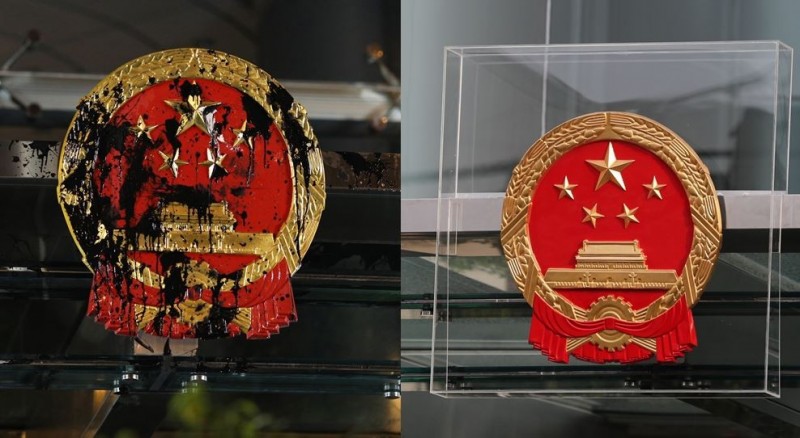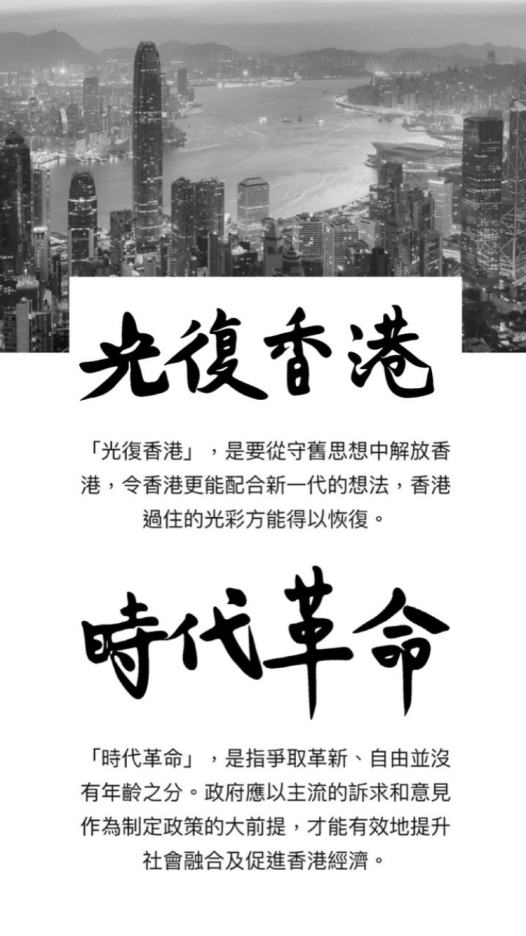Hong Kong Apostasy
This is the latest chapter in ‘Hong Kong Apostasy’, a feature of ‘The Best China’ section of China Heritage that is devoted to the 2019 Anti-Extradition Bill Protest Movement. Its author, the veteran journalist Lee Yee 李怡 (李秉堯), was the founding editor of The Seventies Monthly 七十年代月刊 and he has been a prominent commentator on Chinese, Hong Kong and Taiwan politics, as well as the global scene, for over half a century.
This essay is translated from ‘Ways of the World’ 世道人生, a column that Lee Yee writes for Apple Daily 蘋果日報.
— Geremie R. Barmé
Editor, China Heritage
6 August 2019
***
Note:
- Explications and notes are marked by square brackets [], although amplifications have also been made to the text for readers who are unfamiliar with the political issues touched on by the author, or who might benefit from the highlighting of important cultural and historical references.
— The Translator
***
Other Essays by Lee Yee on the 2019 Hong Kong Protests:
- ‘Endgame Hong Kong’, China Heritage, 5 July 2019
- ‘Young Hong Kong’, China Heritage, 16 July 2019
- ‘Hong Kong Goes Grey for a Day’, China Heritage, 20 July 2019
- ‘This is Who We Are — We Are Hong Kong’, China Heritage, 22 July 2019
- ‘Hong Kong Cannot Lose’, Apple Daily, 26 July 2019 (in Chinese)
- ‘Living and Learning in Hong Kong 2019’, China Heritage, 29 July 2019
- ‘Back in the Year — Hong Kong 1984’, China Heritage, 31 July 2019
Radio Television Hong Kong:
- RTHK, 香港電台, ‘鏗鏘集 (156):時代革命?’, YouTube, 8 August 2019
On 光復 gwong1 fuk6/ guāng fù — ‘Restoration’, ‘Revival’, ‘Taking Back’ and ‘The Light Returns’:
- Peter Zarrow, After Empire: The Conceptual Transformation of the Chinese State, 1885-1924, Stanford University Press, 2012, p.213, quoted in China Heritage Annual 2017: Nanking
[Note: The expression 光復 guāng fù, literally ‘light returns’ — meaning recovering a fallen nation, a rightful restoration or taking back lost territory — was used to describe the establishment of a new government following the abdication of the Manchu-Qing dynastic rulers in 1912. The revolutionary leader Sun Yat-sen — hailed by Beijing and Taipei alike as the Father of Modern China — saw his enterprises not only as one that established a democratic Chinese republic, but also as the Han Chinese reconquest of a land long dominated by Manchu invaders.
Those familiar with Nationalist Party rule following the forced relocation of the Republic of China to Taiwan will recall the constant exhortation to ‘Retake the Mainland!’ 光復大陸!]

***
What’s In a Slogan?
Claudia Mo, a lawmaker in Hong Kong’s pro-democracy legislative minority, called Mrs. Lam’s administration “morally bankrupt” for failing to take responsibility for the unrest.
Mrs. Lam said on Monday that protesters had recently started to chant a slogan that challenged Beijing’s authority over the territory. But Ms. Mo said the slogan alone — “Revive Hong Kong, revolution of our times” [also translated as ‘Restore Hong Kong’ — Ed.] — did not prove that protesters were demanding independence.
“A slogan is a slogan is a slogan,” Ms. Mo said. “If she thinks that is a problem, what is the solution to it? Well, we’ll advise her: Try democracy.”
— Hong Kong Protests Spread, Leaving City Paralyzed
The New York Times, 4 August 2019
***
Restore Hong Kong,
Revolution of Our Times
光復香港
時代革命
Gwong Fuk Heung Gong
Si Doi Gak Ming
Lee Yee 李怡
Translated and Annotated by Geremie R. Barmé
At her press conference on the 5th of August, Carrie Lam, the Chief Executive of the Hong Kong government, asserted that the sovereignty of the People’s Republic of China, to which the territory belongs, as well as the ‘One Country, Two Systems’ political framework that underpins the relationship between Hong Kong and Beijing are being directly threatened by the demonstrations that have rocked the city.
Lam claimed that some protesters are employing tactics that have the potential to destroy the stability and prosperity of the city. In making these assertions, the Chief Executive declared unequivocally that such ‘radical elements have changed the nature of the protests’. Her evidence: the defacing of emblems of China’s sovereignty, in particular, the national emblem of the People’s Republic at the entrance of the Central Liaison Office representing Beijing in Hong Kong has been desecrated [by being spattered with black paint on the night of 21 July]; moreover, others had taken down the national flag from a flagpole at Tsim Sha Tsui and cast it into Victoria Harbour. On top of that, an incendiary pro-independence slogan from 2016 was being chanted:
‘Restore Hong Kong, Revolution of Our Times.’
[Note: This slogan, which features two of the most powerful words in the political vocabulary of modern China (光復, restore, regain or take back, and 革命, revolution), was formulated by Edward Leung Tin-kei (梁天琦, 1991-) following the February 2016 Mong Kok Incident, or ‘Fishball Revolution’. In June 2018, Leung was sentenced to six years in gaol for his role in that period of civic unrest. See Antony Dapiran, ‘How China Lost Hong Kong’, Foreign Policy, 29 July 2019; Mary Hui, ‘The leader of Hong Kong’s leaderless protest movement is a philosophy student behind bars’, Quartz, 31 July 2019; and, RTHK, 香港電台, ‘鏗鏘集 (156):時代革命?’, YouTube, 8 August 2019]
Lam continued on in this vein:
‘Do we want to use the lives of seven million people and the future of Hong Kong as betting chips? This type of method – which some have described as “mutual destruction” – will push Hong Kong onto a path of no return.
‘We can see some actions challenging “One Country, Two Systems” and the country’s national sovereignty, and if I can even speak more boldly, they want to topple Hong Kong, to thoroughly destroy the livelihoods that 7 million people cherish.’
林鄭指部份示威者令事件變質,污損國徽、拉下國旗扔落海,揚言「搞革命」、「光復香港」等,均是挑戰國家主權、危害一國兩制的行為,會摧毀香港的穩定繁榮。「我哋係咪要押上700萬人的穩定生活、同香港未來作賭注?這種有人形容為『玉石俱焚』嘅做法,會令社會走向不歸路。」
***

***
[Note: in Beijing the official response was:
‘The acts have seriously violated the National Flag Law of the People’s Republic of China and the National Flag and National Emblem Ordinance of the Hong Kong Special Administrative Region (HKSAR). Their conduct has blatantly offended the state and national dignity, wantonly trampled on the bottom line of the “one country, two systems” principle, and greatly hurt the feelings of the entire Chinese people, including Hong Kong compatriots.’
And:
‘The ugly flag-insulting acts by a very small number of radicals showed once again that they have gone far beyond the realm of free expression and slipped into the abyss of criminality, said the spokesperson [of the central government], stressing the acts must be severely punished in accordance with the law, without leniency.’
— ‘Central government strongly condemns
flag-insulting acts by radicals in Hong Kong‘
Xinhuanet, 4 August 2019
In response to the ‘national flag incident’, on 4 August a group of craven pro-Beijing Hong Kong celebrities proclaimed that they were proud ‘flag-bearers’ 護旗手 (see ‘成龍、Angelababy 陳小春做護旗手 「#五星紅旗你是我的驕傲」’; and, ‘【愛國愛港】香港演藝界爭做「護旗手」 杜汶澤爆粗:我係X你彭浩翔一個’, 《蘋果日報》, 2019年09月6日. In a gesture of patriotic bravado, C.Y. Leung 梁振英, the widely despised former Chief Executive of the territory, offered HK$1 million for credible information that would lead to the prosecution of those involved with the desecration of the flag.
For Lee Yee’s earlier observations on popular Hong Kong protests aimed at Chinese state symbols, see 李怡, ‘國歌’, 2017年08月29日; and, ‘國歌的現實意義’, 2017年08月31日, translated excerpts from which feature in ‘1 October 2017 — The Best China’, China Heritage, 1 October 2017]
In my opinion, many Hong Kong people are probably of the view that the Extradition Bill [that Carrie Lam attempted to ram through the Legislative Council from March 2019, an act that led to the mass protest movement from June] itself as well as the ham-fisted actions of Lam’s government in response to the mass unrest that it incited, in particular the Yuen Long Incident of the 21st of July [during which thugs attacked protesters and innocent bystanders while the police took no action], were the very kinds of ‘violent incidents that changed the nature of the protests’.
Many people would perhaps share my view that the [2016] slogan ‘Restore Hong Kong, Revolution of Our Times’ reappeared in direct response to the manner in which Lam’s government has itself been endangering the One Country, Two Systems governing framework of Hong Kong. These are actions that in turn threaten to ‘jeopardise the city’s safety, security and prosperity’ [things that Lam claims to be concerned about].
Carrie Lam’s adamant refusal to use the kind of formal legal terminology routinely employed by the Legislative Council to announce that her Extradition Bill is ‘withdrawn’ from future consideration has led protesters to believe for good reason that the authorities have left themselves sufficient wriggle room to pursue a despised piece of legislation that in its very nature signifies their willingness to sacrifice the basic legal rights of seven million Hong Kong citizens. In the process are they are signaling that they themselves are willing ‘to use the lives of seven million people and the future of Hong Kong as betting chips’?
Carrie Lam’s obdurate behaviour has forced Young Hong Kong onto a path of no return. It is indeed one of ‘mutual destruction’, one that recalls the sentiment ‘We are determined to see you dead, and we will die with you if that’s what it takes.’
[Note: Lee Yee has previously discussed the expression予及汝皆亡 yú jí rǔ jiē wáng, the second part of a famous declaration that reads in full:
時日曷喪 shí rì hé sàng,
予及汝皆亡 yú jí rǔ jiē wáng
‘When will this sun [i.e., the tyrant Jie] finally set?
We will take you down and we will die together!’See ‘Declarations of Tang’ in the Book of Documents《尚書 · 湯誓》. For Lee Yee’s earlier use of the expression, see ‘Living and Learning in Hong Kong 2019’, China Heritage, 29 July 2019]
Carrie Lam’s demeanor has been disdainful and she has been utterly devoid of humanity when confronted by the acts of demonstrators who have laid their lives down to express their protest. She has similarly remained unmoved even when hundreds of Hong Kong young people have been injured and arrested. Instead, she has laid the blame for everything that has happened at the feet of the young people who have repeatedly taken to the streets to struggle for freedom and protect their legal rights. When facing the media [after a two-week silence on 5 August] nothing she said served to calm passions or dampen the flames of outrage. In fact, she achieved the opposite, for in her comments she has fanned the flames of protest and poured oil on the conflagration of indignation.
我想相當多的市民的想法是:送中條例以及接下來的林鄭政權倒行逆施的手段,尤其是7.21元朗事件後,「令事件變質」,示威者重提「光復香港,時代革命」的口號,是因為林鄭的作為已「危害一國兩制」、「會摧毀香港的穩定繁榮」;送中條例堅持不肯用立法會的法定語言「撤回」,讓人感到是要留下後路,重新提出這個犧牲香港700萬人的法律權利的惡法,「押上700萬人的穩定生活、同香港未來」?林鄭一意孤行的作為,把香港年輕人逼至走投無路,被迫走上「玉石俱焚」的「予及汝皆亡」的「不歸路」。面對數人死諫,數以百計的大好青年被打受傷被捕,林鄭殘酷冰涼的心靈居然沒有一點聲響,反而把責任推向保衞香港自由和法律權利的年輕抗爭者。她見傳媒不但沒有澆熄怒火,反而是向市民的怒火澆火水。
***

***
‘Destroying the national emblem, tearing down the national flag and throwing it into the sea’ — as I have previously noted cases in which the national flag is defaced, such as in the United States of America, have been determined by judges to be actions protected by constitutional provisions covering the freedom of expression. Or, ‘the Government may not prohibit the expression of an idea simply because society finds the idea itself offensive or disagreeable.’ If the desecration of China’s national flag can really ‘threaten One Country, Two Systems’ as Carrie Lam has claimed, then surely we must wonder isn’t it a perilously fragile governance framework?
[Note: As Justice Anthony Kennedy wrote in his concurrence with the Supreme Court’s majority opinion on the issue of flag desecration and the freedom of expression in 1989:
‘For we are presented with a clear and simple statute to be judged against a pure command of the Constitution. The outcome can be laid at no door but ours. The hard fact is that sometimes we must make decisions we do not like. We make them because they are right, right in the sense that the law and the Constitution, as we see them, compel the result. And so great is our commitment to the process that, except in the rare case, we do not pause to express distaste for the result, perhaps for fear of undermining a valued principle that dictates the decision. This is one of those rare cases… . Though symbols often are what we ourselves make of them, the flag is constant in expressing beliefs Americans share, beliefs in law and peace and that freedom which sustains the human spirit. The case here today forces recognition of the costs to which those beliefs commit us. It is poignant but fundamental that the flag protects those who hold it in contempt.’]
「污損國徽、拉下國旗扔落海」,按美國焚燒國旗的案例,法官認為屬「言論表達自由」的範圍,經典判詞指,美國國旗是「自由信念的標誌」,「因此,這面國旗同時也保護那些藐視它的人!」。中國國旗縱使不是「自由信念的標誌」,但損毀一面國旗如果就能夠「危害一國兩制」,那麼「一國兩制」豈不是太脆弱了?
The nature of things has indeed changed, not because of the actions of the protesters, but rather as a direct result of the behaviour of the government and its repeated attempts to suppress protest.
During the mass Anti-Extradition Bill demonstrations participated in respectively by one and two million people, there was no chanting of the slogan ‘Restore Hong Kong, the Revolution of Our Times’. Following the incident of 21 July, however, during which both the local and the international media reported on what was evidence of the collaboration between local Yuen Long thugs and the police, things changed. That is also because people noted that in the wake of the shocking violence, the police detained a number of suspects but only in the most perfunctory manner. Despite the clear evidence that the mob of gangsters had brazenly assaulted numerous people with weapons, the detainees were released having only been charged with the negligible crime of illegal assembly. Meanwhile, citizen-demonstrators against whom there was only the most specious evidence of any acts of lawlessness were detained on the extremely serious charge of rioting [a crime that carries a ten-year custodial sentence]. Similarly, unlike those armed thugs, normal people who had been detained with nothing more than the most flimsy of weapons, were denied release from police custody and have been remanded in detention until hearings to be held in September.
[Note: In response to the situation, Hong Kong lawyers protested en masse on 7 August 2019. According to one report:
In the scorching midday heat about 3,000 people gathered in the heart of Hong Kong’s financial district to call on the justice secretary, Teresa Cheng, to answer allegations of politically motivated prosecution, with dozens of protesters held in police stations across the semi-autonomous city.
“We see there has been selective prosecution,” said a 29-year-old litigator who would only give her name as JL.
Referring to attacks on demonstrators by suspected triads, she said: “The [lack of prosecutions over the] white shirt attack in Yuen Long, compared to the speed of charging so-called rioters, there’s a difference in how police handle the case.”
— Christy Choi, ‘Hong Kong’s lawyers march
against “political prosecutions”‘,
The Guardian, 7 August 2019]
When we are confronting a political order — a regime — of this nature, we must ask whether Hong Kong has irrevocably changed. Indeed, is there not evidence aplenty to indicate that Hong Kong has already ‘been occupied by the enemy’ 淪陷?
[Note: The expression 淪陷, pronounced lúnxiàn in Standard Chinese, generally applies to territory under the control of an occupying army, invaders or enemy forces. Hong Kong protester use the term to describe the state of the city under what is known as the ‘Hong Kong Communist Government’ 港共政府]
In recent years, the Mainland has chorused that it will ‘Restore China’ [to its former glory as part of Xi Jinping’s version of ‘The China Dream’]. But there’s a problem: no one knows what exactly is supposed to be ‘restored’. Is the aim perhaps to revive the Tyranny of the Qin Dynasty, or even that of the Maoist Cultural Revolution? When it comes to the slogan ‘Restore Hong Kong’, however, we know exactly what era we are talking about: the restoration of a Hong Kong in which basic human rights were vouchsafed, one in which our citizens enjoyed the full range of legal rights, one in which the police protected the populace and did not launch violent assaults on those who were merely exercising their legally stipulated freedom to express themselves.
[Note: Official China had its own interpretation of what ‘Restore Hong Kong’ means. As the spokesman for the Hong Kong and Macao Affairs Office of the State Council put it:
我注意到,林鄭月娥行政長官也在記者會提到,一些人打出的一個口號,「光復香港,時代革命」。我也想問這些人,香港是什麼地方?香港是中華人民共和國的一個特別政區,你們想將香港光復到哪裡去?所以,從口號可見他們的政治動機一目了然、路人皆知,就是要挑戰一國兩制中「一國」這根本,就是要挑戰這根本。所以面對這些觸目驚心的暴力犯罪活動,和對一國兩制原則底線的挑戰,難道還有人看不出來現在的事態已經變質了嗎?中央絕不會放任少數人以自己的暴力行徑,將香港拖入危險的境地。所以當前香港壓倒一切的最迫切、最重要的任務的是止暴制亂,恢復秩序。中央堅定不移地支持林鄭月娥行政長官帶領特區政府依法施政,堅定不移地支持香港警隊嚴正執法。
— from 楊光,《國務院港澳辦答記者問實錄
強調「全國人民都是香港警方的強大後盾」》
reprinted by Initium Media 端傳媒, 6 August 2019]
It doesn’t matter if people wave the Union Jack or the American flag, what does matter, however, is that no one is appealing to the British or the Americans to come here and impose their rule on Hong Kong. What people are expressing by their acts of defiance and through their protests is the desire for Hong Kong to restore the kind of free and open Anglo-American system in which everyone can truly enjoy basic freedoms and rights.
事件的確有些變質了。但變質的原因不是示威者造成的,而是政府的應對與鎮壓行動造成的。在反送中的100萬人、200萬人的遊行中,聽不到「光復香港,時代革命」的口號,而在7.21之後,所有境內境外媒體的影片都顯示,元朗警黑配合,事後警方交差式拘捕十來個人,他們持械狂打市民昭昭在目,卻只控以非法集結罪並獲保釋;反而一些證據薄弱的示威者,就控以最重判刑的暴動罪,一些持有微不足道器械的示威者更不獲保釋,還柙至9月。面對這樣的政權,還是原來的香港嗎?還不足以說香港已經淪陷了嗎?中國近年高喊的「復興中華」,沒有人說出是復興到甚麼時代,是暴秦時期還是文革時期?但「光復香港」我們都知道要「光復」到甚麼時代,不就是人權有保障、市民有法律權利、警察是保護市民而不是向自由表達意見的市民施暴的香港嗎?打出港英旗也好,打出美國旗也罷,重點都不是呼喚英國美國來統治香港,而是表示香港要回到英美體制中對自由、對人權的保護。
‘Revolution of Our Times’ — a revolution of what, we may well ask? Well, the word ‘re-volve’ is literally about ‘turning things around’ or ‘rolling back’. In other words, people are agitating for a fundamental change in the direction of Hong Kong.
Revolution does not have to be about replacing a dynasty or overturning a political regime; nor is it necessarily about violence and bloodshed. After all, both the Industrial Revolution and Technological Revolution were revolutions. Then again, the Cultural Revolution was imposed by the government of the day on itself. Although the 1911 Xinhai Revolution brought an end to the Manchu-Qing dynasty [and led to the founding of the Republic of China in 1912] it was not particularly violent or bloody; as a matter of fact, some historians are of the opinion that it was less violent and bloody than the Japanese Meiji Restoration [of 1868].
‘Revolution of Our Times’ in Hong Kong is about a fundamental change in the political direction of the city, one that is presently being imposed by the Beijing and Hong Kong Communist authorities; their direction is moving against the long-agreed One Country, Two Systems political arrangements in the territory.
[Note: For a meditation on the word ‘revolution / 革命’ and China, see Liu Xiaobo, The Holy Word ‘Revolution’, on the website of the documentary film The Gate of Heavenly Peace, reprinted with permission from Jeffrey N. Wasserstrom and Elizabeth J. Perry, eds, Popular Protest and Political Culture in Modern China, 2nd. ed, Westview Press, 1994]
「時代革命」是革甚麼命?革命的定義就是尋求根本性的改變。革命不一定是改朝換代,不一定是暴力與流血。工業革命,技術革命也是革命。文化大革命是在原有朝代中進行,辛亥革命實際上暴力與流血不多,有史家認為暴力與流血比日本的明治維新還少。香港的「時代革命」,就是要把被中共港共徹底破壞了的一國兩制、港人治港作根本性的改變。
When the Anti-Extradition Bill protests began, Hong Kong people had not planned to agitate for such a basic change of direction as such. The events of the 21st of July, however, led the majority of people to believe that our city is now under the control of a gangster regime [that is a government that condones, if not encourages, an alliance between the police and triad gang thugs to create a new form of rule by intimidation and terror]. As a result, now as people continue to demonstrate in the spirit of ‘inclusive, rational and non-violent’ protest, they have also taken up Edwin Leung’s [previously highly controversial] 2016 slogan:
‘Restore Hong Kong, Revolution of Our Times’!
As Carrie Lam herself said during her 5 August press conference: ‘The nature of things changed’. That’s right, but they changed as a direct result of the Yuen Long Incident of the 21st of July.
香港市民本來沒有想到要作這樣根本性改變的,但7.21讓我們覺得香港變成黑社會統治了,於是即使在和理非的示威中,也喊出了梁天琦2016年的口號:「光復香港,時代革命」!事情的變質是由元朗事件引起的。
***
Source:
- 李怡, ‘光復香港,時代革命’, 《蘋果日報》, 2019年8月6日
***


